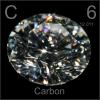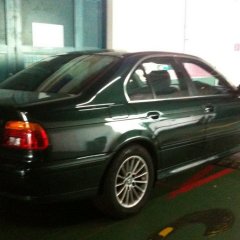Search the Community
Showing results for tags 'Emissions'.
-
Not unexpected since the original proposal is not practicable financially in short. Stricter emissions standards for trucks and buses but not for cars and vans Several automakers, including Stellantis, Volkswagen, Skoda, and others, have been very critical regarding the strict upcoming Euro 7 emissions regulations on the Old Continent. Some executives even described them as “useless” but it seems that there is some light at the end of the tunnel for the critics of the new standards. Just moments ago as of writing this article, European Union ministers agreed on new and watered-down rules. After facing opposition from automakers and member countries, including France, Italy, the Czech Republic, Bulgaria, Hungary, Poland, Romania, and Slovakia, the ministers agreed not to implement significant changes to the existing Euro 6 standards for cars and vans. There will be stricter regulations for buses and heavy vehicles, though. However, the decision isn’t final yet. Spain, which holds the rotating EU presidency, presented the compromise text that gained the agreement of the Council of the European Union, composed of EU ministers. The final form of the law must be discussed and signed by the Council, the European Parliament, and the European Commission. "We believe that, with this proposal, we achieved broad support, a balance in the investment costs of the manufacturing brands and we improve the environmental benefits derived from this regulation," Spain's minister for industry, trade and tourism, Hector Gomez Hernandez, commented. “The member states’ position is an improvement on the European Commission’s Euro 7 proposal – which was entirely disproportionate, driving high costs for industry and customers, with limited environmental benefits,” the European Automobile Manufacturers Association director, Sigrid de Vries, added. “The Council’s aim to continue the effective Euro 6 tests is sensible. However, compared to what is in place today, Euro 7 is much broader for new cars, vans and, in particular, heavy-duty vehicles, requiring significant engineering and testing efforts.” As ironic as it may sound, the automakers in Europe have said that the initially proposed stricter emissions standards could lead to slower adoption of electric vehicles. The Euro 7 in its earlier form would distract the companies from investing in EVs, Renault CEO Luca de Meo said recently, while Skoda's head honcho Klaus Zellmer admitted that building small cars under the stricter emissions could be impossible.
-
http://www.straitstimes.com/singapore/transport/inspection-fees-rise-by-10-as-government-tightens-vehicle-emission-standards?utm_campaign=Echobox&utm_medium=Social&utm_source=Facebook&xtor=CS1-10 Looks like the tuning workshop will be badly affected.
-
A new Carbon Emissions-Based Vehicle Scheme (CEVS) will apply to all new cars, taxis and newly imported used cars with effect from Jan 1, 2013, the Land Transport Authority said on Wednesday. This followed announcements made by Minister for Transport Lui Tuck Yew in Parliament. Under CEVS, all new cars and imported used cars with low carbon emissions of less than or equal to 160g carbon emissions per kilometre (CO2/km) will qualify for significant rebates of between $5,000 and $20,000, which will be given as an offset against the vehicle's Additional Registration Fee (ARF) payable. Cars with high carbon emissions equal to or more than 211g CO2/km will incur a corresponding registration surcharge between $5,000 and $20,000. The CO2/km performance data for each car model will be provided on mandatory information labels at car showrooms. To encourage taxi companies to adopt lower emission models for their fleet, the CEVS rebate and registration surcharge for taxis is set at 50 per cent higher compared to cars, between $7,500 and $30,000. source: http://www.straitstimes.com/Parliament/Sto...ory_774890.html source: http://www.channelnewsasia.com/stories/sin...1187568/1/.html
-

Carbon emissions - superiority of German technology
Caravan posted a topic in General Car Discussion
While browsing sgcarmart and checking out vehicles specifications, something caught my eye - carbon emissions. With the new CEVS kicking in from July, cars with 'high' emissions can be taxed additional $30k! But what is interesting is how the German vehicles have much lesser emissions than comparative Japanese cars. Examples below. Specifications from sgcarmart. Toyota corolla 1.6(A) - CO2 emission 151 g/km (As tested by LTA) / Kerb weight 1,265 kg Mercedes Benz E200 - CO2 emission 146 g/km (As tested by LTA) / Kerb weight 1,655 kg Numbers speak for themselves. Further e.g. Subaru WRX STi 2.5(M) - CO2 emission 242 g/km (As tested by LTA) / Kerb weight 1,516 kg (additional $30k CEVS tax from July) Mercedes Benz A45 AMG - CO2 emission 165 g/km (As tested by LTA) / Kerb weight 1,555 kg Seems like the German technology is far ahead of the Japanese.- 18 replies
-
http://www.channelnewsasia.com/stories/sin...1239830/1/.html how does it work? rebate upon purchase new car?
-
Maserati CEO, Harald Wester, had some very strong and unkind words regarding electric cars at the 2013 Shanghai Motor Show. "All this discussion about zero emissions is nonsense. Nobody talks about the efficiency of how the battery is charged. It varies strongly from region to region, depending on how the energy is produced, nuclear, coal and so on, but even the best is not ahead of the internal combustion engine," he said. Wester's argument is based on data regarding power charging stations' efficiency at various parts of the world, which show that the average CO2 emission of electric cars in Europe, US and China as 86g/km, 110g/km and 191g/km respectively. "Diesel and CNG are the more obvious answers if CO2 is the focus. Both are more viable answers than hybrid. If they gave us a CO2 target instead of imposing technology then we would go that way. If we want a realistic solution to emissions then the regulators need to be more honest in how they calculate emissions. Electric cars are not the answer," Wester added. However, Wester commented that the Italian brand may have to look into a hybrid system in the near future to meet fuel economy regulations.
- 3 comments
-
- events
- discussions
- (and 9 more)
-
[extract] Following the footsteps of Ford, Citroen has recently introduced its new PureTech family of three-cylinder petrol engine with capacity of 1.0-litres and 1.2-litres. Unlike Ford's EcoBoost, Citroen's power plants are naturally-aspirated and hence they produce a more modest output ranging from 68bhp to 82bhp. These new range of engines will be fitted on the C3, DS3 and C-Elys
-
- new technology
- engine
- (and 10 more)
-
[extract] When a car is the market leader in its segment, it becomes an easy target for critics. In this case, it is the all new MK7 VW Golf. Unsatisfied with the fuel consumption of the new model, environmental activists from Greenpeace about 50 people picketed the premiere of the German hatchback in Berlin. Greenpeace's German transportation expert, Wolfgang Lohbeck, commented that Volkswagen has the technical knowledge to build a car whose base model could deliver a better fuel consumption than the advertised 4.9L/100km
-
From July 1, car buyers who want to buy a car model with better fuel efficiency and lower carbon emissions will find it easier to do so with help from the Land Transport Authority (LTA) which is going to launch three new initiatives. In preparation for the Carbon Emissions-based Vehicle (CEV) scheme, the LTA will take over the administration of the Fuel Economy Labelling Scheme (FELS) from the National Environment Agency, a LTA spokesman said on Wednesday. The new initiatives include a fuel economy label which will highlight the model's carbon emissions per km, fuel consumption and relative carbon emission performance. The label will also show the car banding under the upcoming scheme and corresponding rebate or surcharge to encourage consumers to shift to more fuel efficient and lower carbon emission models. A new brochure on the labelling scheme, aimed at buyers on the advantages of choosing fuel efficient cars, how to read the new fuel economy label, and the CEV scheme will be available at all car showrooms. Source: http://www.straitstimes.com/BreakingNews/S...ory_813047.html
-
The Government will soon announce a new emissions-based vehicle tax system. It is expected to replace the decade-old green vehicle rebate scheme, which expires at the end of the year. But more than just handing out tax rebates to buyers of environmentally friendlier cars, the new scheme will take a carrot-and-stick approach. Buyers of fuel-efficient new cars stand to enjoy rebates of up to $15,000, which they can use to offset their vehicles' Additional Registration Fee (ARF), the main car tax here. Those who go for more pollutive models may have to pay up to $15,000 in extra taxes. source: http://www.straitstimes.com/BreakingNews/S...ory_764273.html
-
looking around all the sports cars are going, going gone the rx8, civic type r, s2000 are all already gone seriously will we be left with 80bhp cars in the future? i might be slow but what are the manufacturers gonna do? all going into fully electric or hybrid? then how about the lambos, aston martins, ferraris?
-

Lotus Elise Returns Greener, Purer and More Desirable
Stockholm-Syndrome posted a blog entry in MyAutoBlog
The new Lotus Elise probably has the lowest CO2 for its performance for any gasoline high performance sportscar in the world. The body -
Like it or not, cars will be greener (read: no more V8 growls). Even if there is some sort of speaker to replicate the "sound", it will never come close to the real thing. However, in our local context, owning a car with a V8 engine is reserved for about 2% of the population who are rich enough. Most of us would rather not hear our engines at all, not when it sound like moo-ing cows. Which means, Singapore, given it's tiny area, lack of space to stretch ANY engine and ridiculous tax rules, is an ideal location for electric cars. Although still largely impractical for families, the 2 seater Mini-E is still one of the more practical zero-emission car out there. Retaining the hippy looks of it's petrol-driven cousin, the Mini Cooper, the E looks pretty darn good too. (Anyway, the current Mini Cooper can hardly seat more than 2) If NEA meant anything they said about going green, perhaps investing in charging stations is a good proper step ahead. Start with the many multi-storey carparks here. Given the compact size of the Mini-E's charging wall panel, space should not be a problem. I'm no electrician or engineer, but I do think that it is not entirely difficult to hook up these wall panels to the mains. A typical charging panel Next, following the example set by the new City Square mall, setup charging stations in carparks of Malls, Office Buildings etc. Combine all these ideal factors with the low mileage that Singaporeans travel from point to point, and driving an electric vehicle might not sound very far-fetched. To this extent, the Mini-E is probably ideal, other than the lack of engine noise, it handles and drives like any other Mini out there. With 220nm of torque available the instant u step on the accelerator, and a top speed of around 152km/h, it will leave most cars biting the dust too. The stated 167 kilometers range on a single charge is also more than adequate for anyone living in Singapore. From point to point, if you travel from Changi to Tuas, it would at most use up 1/2 of the battery's capacity. However, this is only an ideal scenario. With space for only the driver and a passenger, only those who are single, attached or married without children might consider the Mini-E. I am not doubting the government's willingness to setup charging stations. Than there is the problem of getting people to adopt a petrol-free driving lifestyle, such as having to plug in everytime you park (which would not take more than 2 minutes??). Limited space, although there is still a 60L boot! Also, for the zero emissions dream to be realised, a standard charging format should also be fixed upon. The most difficult hurdle to cross right now? Cost and size of the batteries. It will sky rocket the price of the car. Than again, if the government is willing to give electric car owners a tax break, it might not cost much different from your regular Mini (applicable only to Singapore). Quite honestly, the weird weather patterns has gotten the better of me and this post came as a result of that. Let's not just sit and talk about it, it is time to start doing something.
-
SACRAMENTO, Calif., Dec, 12, 2007 -------------------------------------------------------------------------------- (AP) Handing a major defeat to the auto industry, a federal judge ruled Wednesday that California can regulate greenhouse gas emissions from vehicles. The ruling by U.S. District Court Judge Anthony Ishii clears one of the hurdles in California's effort to regulate tailpipe emissions from cars, trucks and sports utility vehicles. Automakers sued the state over the tailpipe standards it approved in 2004, which would force automakers to build cars and light trucks that produce about 30 percent fewer greenhouse gases by 2016. However, the state still needs a waiver from the U.S. Environmental Protection Agency to begin implementing the program. The EPA has not yet issued a decision. California and 14 other states sued the agency in November seeking quicker action. "It's a major victory and a giant step forward for California," California Attorney General Jerry Brown said of Wednesday's ruling. "I hope this will get the attention of President Bush and have him support significant caps on greenhouse gas emissions." In its lawsuit against the state, the auto industry argued that it was the federal government's responsibility to establish one uniform fuel economy standard. Without one, manufacturers would be forced to produce vehicles using too many different efficiency standards. They argued that a federal energy law passed in 1975 gives the U.S. Department of Transportation sole jurisdiction over fuel economy. But Ishii rejected that claim, saying Congress gave California and the EPA the authority to regulate vehicle emissions, even if those rules are more strict than those imposed by the federal government. "While we have not yet had an opportunity to analyze the California federal court's decision, we are obviously very disappointed by this result," said Michael Stanton, president and CEO of the Association of International Automobile Manufacturers. Under the Clean Air Act, California is the only state that can set its own vehicle pollution standards, because it started regulating air pollution before the U.S. EPA was created. Other states are free to choose either the California rules or the federal government's. The state's tailpipe emissions are key to California's goal of lowering greenhouse gas emissions to 1990 levels by 2020. About a third of the state's emissions come from cars, pickups and sport utility vehicles, a figure that will only grow if they are not regulated in the nation's most populous state.
-
there are total 5 areas to the reducing carbon emission in Singapore from STI: Power Generations Industry Transport Buildings Household two interesting points for the proposal for transports (cars, i reckon) in cutting carbon emission * Mandatory fuel economy labelling (will cars with better FE/FC be cheaper in the future? or with the 'sudden' demand it actually becomes more expensive? who will verified if the stated FE/FC by car makers be of the real deal and be of local context?) cultivating fuel-efficient habits everyone return to driving centre and have lesson on how and how not to accel? ------------------- TRANSPORT Aim: Minimise emissions by managing usage, improving fuel efficiency and promoting use of cleaner fuels and green vehicles. Vehicle population in 2006: 776,571. Existing: Mechanisms like the Certificate of Entitlement system, Electronic Road Pricing, and schemes like car sharing and Park-and-Ride. Taxes pegged to engine capacity and petrol tax based on volume. Voluntary fuel economy labelling. Green vehicle rebate. Proposed: Mandatory fuel economy labelling, further support for the use of vehicles using compressed natural gas, review of the green vehicle rebate, cultivating fuel-efficient habits and promoting public transport and car-pooling.
-
See this article here: http://www.mycarforum.com/forum/gforum.cgi...t=713429#713429
-
Actually alot Turbo cars will be kenna of this. No long, only the desiel cars will be come up turbo and in fact they can be very fast.





